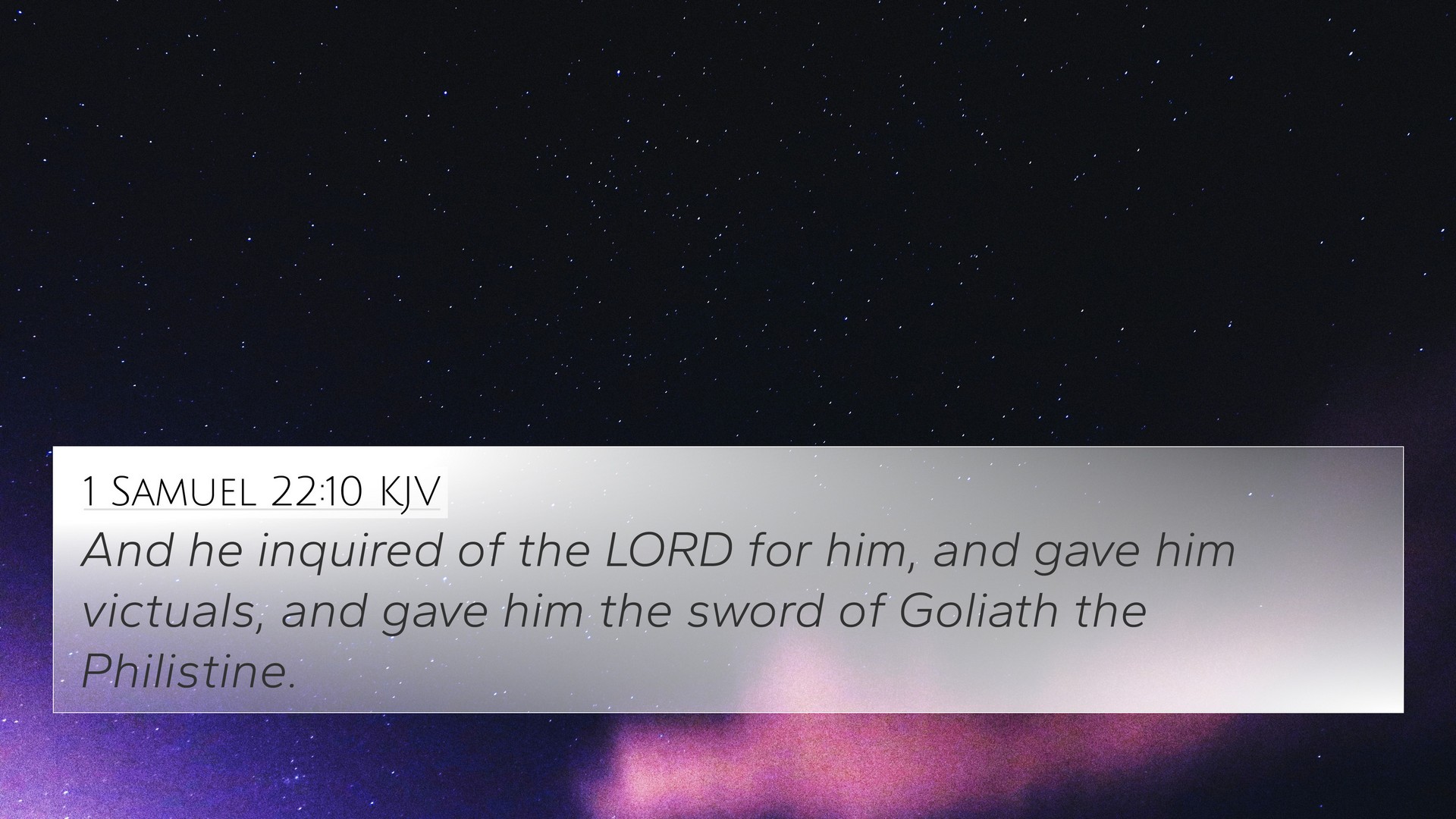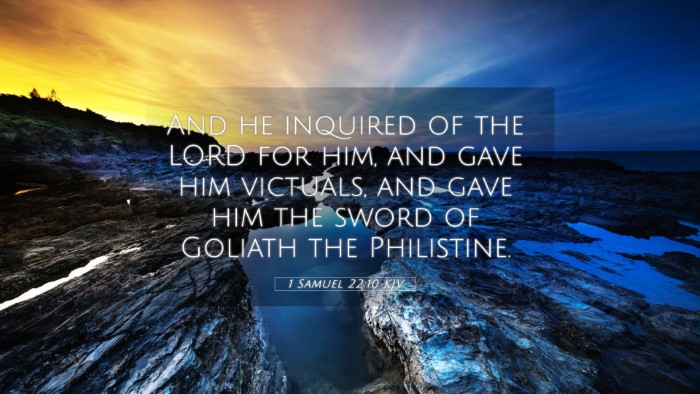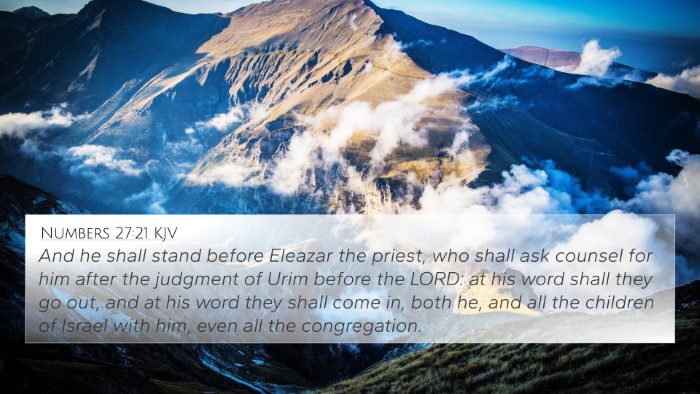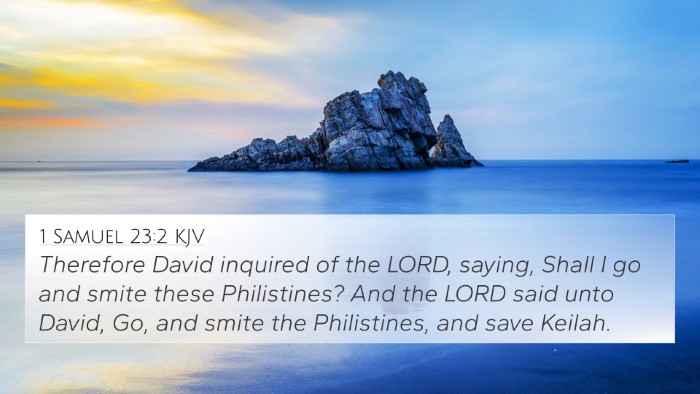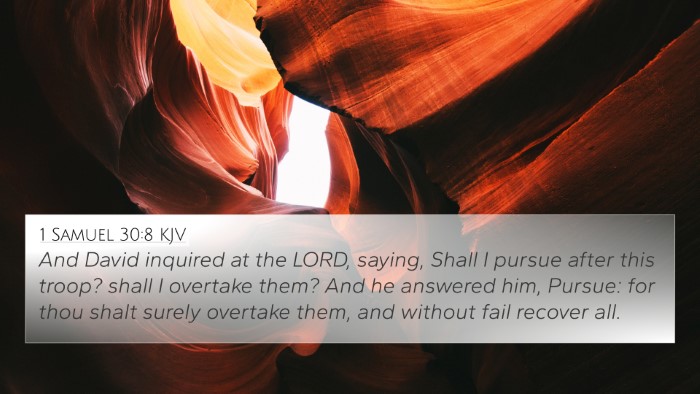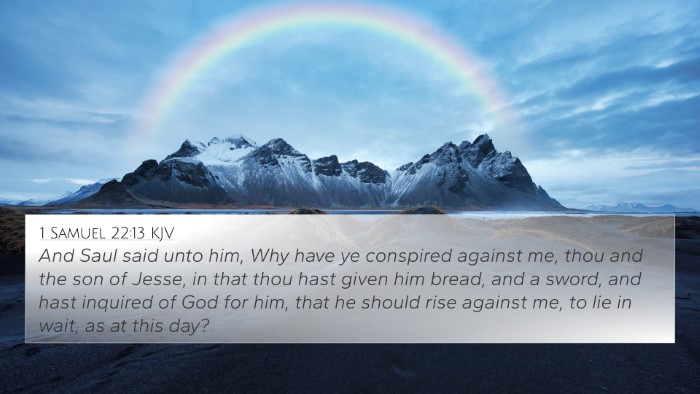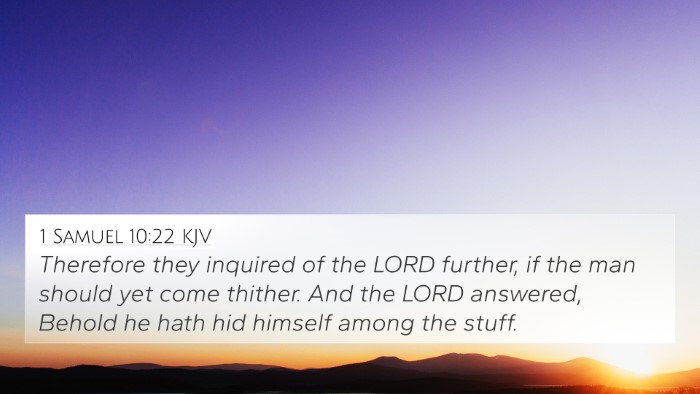Understanding 1 Samuel 22:10
In 1 Samuel 22:10, the verse presents an account of Doeg the Edomite informing Saul about David's actions at Nob, where he sought provision and help from Ahimelech the priest. This incident sets the stage for the ensuing conflict, showcasing both David's precarious situation and the treachery associated with his flight from Saul.
Key Themes and Insights
- Treachery and Loyalty: Doeg’s report exemplifies betrayal, contrasting David’s pursuit of refuge with the betrayal from within his ranks.
- Divine Providence: While David seems to be in peril, the narrative hints at God's overarching plan and the eventual rise of David as king.
- The Role of the Priesthood: Ahimelech's involvement underscores the critical intersection between religion and governance, especially as a spiritual leader aids a fugitive king.
- Consequences of Injustice: The fallout from this betrayal leads to tragic consequences for Ahimelech and the priests at Nob.
Commentary Insights:
- Matthew Henry: Emphasizes the foolishness of Doeg's character, a man who, seeking to curry favor with Saul, reports on Ahimelech's assistance to David, showing how self-serving actions can lead to tragic outcomes.
- Albert Barnes: Notes that this incident illustrates the often blurred lines between those in power and the innocent, portraying how intention can be misconstrued in the pursuit of authority.
- Adam Clarke: Offers an interpretation of the narrative as a demonstration of how God can use even the actions of the wicked to bring about His plans for His people, providing a backdrop for David's anointing as king.
Bible Verse Cross-References
- 1 Samuel 21:1-6 - David seeking provisions from Ahimelech.
- 1 Samuel 16:12-13 - David's anointing as king, setting the context for the conflict with Saul.
- Psalm 52 - A poetic reflection on Doeg’s treachery and the consequences of deceit.
- John 7:49 - A New Testament reference indicating knowledge and wisdom of the common people, contrasting with the elite’s decisions.
- Matthew 10:16 - Jesus instructing his followers to be wise as serpents, akin to understanding the dangers similar to David's situation.
- Hebrews 7:11 - Discussing the priesthood of Melchizedek, contrasting Ahimelech's role in this narrative.
- Exodus 22:28 - Addresses the reverence due to God and proper conduct regarding His priests, highlighting the sanctity of the priestly office which was violated by Saul's order.
- 1 Kings 2:26-27 - Reference to Abiathar, the son of Ahimelech, serves as a connection to the consequences that follow this betrayal.
- Proverbs 25:18 - Highlights the seriousness of false witness, reflective of Doeg's actions.
- Jeremiah 37:13-15 - Illustrates how false accusations can lead to significant consequences, paralleling David’s plight.
Thematic Connections
The connections between 1 Samuel 22:10 and various scriptures not only provide insights into the narratives of betrayal, loyalty, and the consequences of deceitful actions but also highlight the greater narrative of God's redemptive work through flawed individuals. Cross-referencing these biblical texts enriches our understanding of the overarching themes of divine providence and the struggle between good and evil.
Bible Reference Resources for Cross-Referencing
- Bible concordance - A useful tool for locating themes and terms across scripture.
- Bible cross-reference guide - A comprehensive resource for studying relationships between verses and thematic content.
- Cross-reference Bible study methods - Essential for deeper understanding of scriptural connections.
- Tools for Bible cross-referencing - Helpful in identifying nuances and deeper meanings in biblical texts.
- Bible chain references - An effective approach for exploring interconnected verses.
Conclusion
In summary, 1 Samuel 22:10 serves as a poignant reminder of the complexities of human nature, the ramifications of betrayal, and the steadfastness of God’s plan amid chaos. The interplay of characters like David, Ahimelech, and Doeg informs our understanding of loyalty and divine purpose, inviting us to explore further through thorough scriptural cross-referencing.
